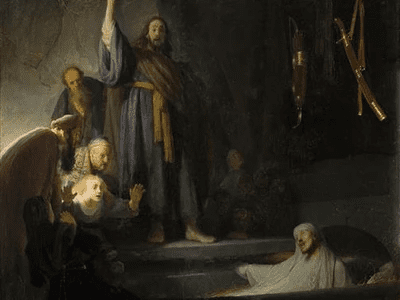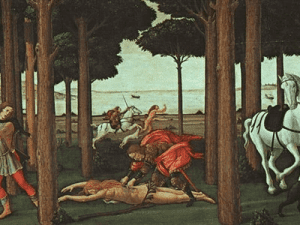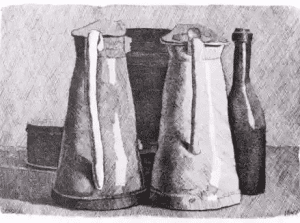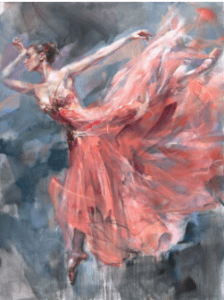Title of Artwork: “The Raising of Lazarus”

Artwork by Rembrandt
Year Created 1630
Summary of The Raising of Lazarus
Dutch artist Rembrandt produced The Raising of Lazarus, an oil-on-panel work from the early part of his career, sometime between the late 1620s and the early 1630s, depending on the ownership institution. In the Gospel of John, Chapter 11, Lazarus is resurrected from the dead. It is part of the LA County Museum of Art’s collection.
All About The Raising of Lazarus
When Lazarus re-awakens and rises from his grave as Christ beckons him, the artwork depicts this moment Unlike the individuals to his left, Lazarus is in the shadows of the picture, while others are well-lit. Those present are in awe as Lazarus returns to life. First grace, depicted in a tale of spiritual life, is depicted in this painting (sorrow for sins committed in order to seek penitence and redemption).
Because of the darkness of the burial cave and the dwindling light of the torches, Rembrandt employed chiaroscuro to draw the viewer’s attention to and emphasise the figures in this picture. However, Rembrandt painted only a handful of New Testament religious scenes, yet there are several prints with the same subject matter.
Before he left Leiden and shortly after his apprenticeship with Pieter Lastman, whose influence can clearly be seen, Rembrandt painted The Raising of Lazarus. Rembrandt produced two etchings of the same subject, but with different compositions, in 1632 and 1642. (see gallery below).
The 1632 etching depicts the cave from a different vantage point, but the 1642 etching depicts a different cast of characters. Jesus Christ is depicted as a healer in the 1642 print, instead of a magician. Weary magician rather than triumphant rescuer, according to Sister Wendy Beckett, the author of this book.
A Jan Lievens etching of the same name may have inspired this painting’s subject matter. Rembrandt and Lievens were likely collaborators as well as close friends. The painting’s composition may have been inspired by a Rembrandt drawing from the same period as the Burial of Christ. When Rembrandt painted The Resurrection in 1635/1639, he drew the closest comparison to the Raising of Lazarus. According to an examination of previous drawings, the figures’ positions are comparable, which shows that they were derived from one another.
As a result of Rembrandt’s bankruptcy sale in 1656, he had to part with Raising of Lazarus, which he had held for most of his life. It was listed in the anteroom of Rembrandt’s house. The picture was purchased by Howard F. Ahmanson, Sr. in 1959 and donated to the Los Angeles County Museum of Art, where it remained till the present day.
Information Citations
En.wikipedia.org, https://en.wikipedia.org/.
Recommend0 recommendationsPublished in Artworks







Responses